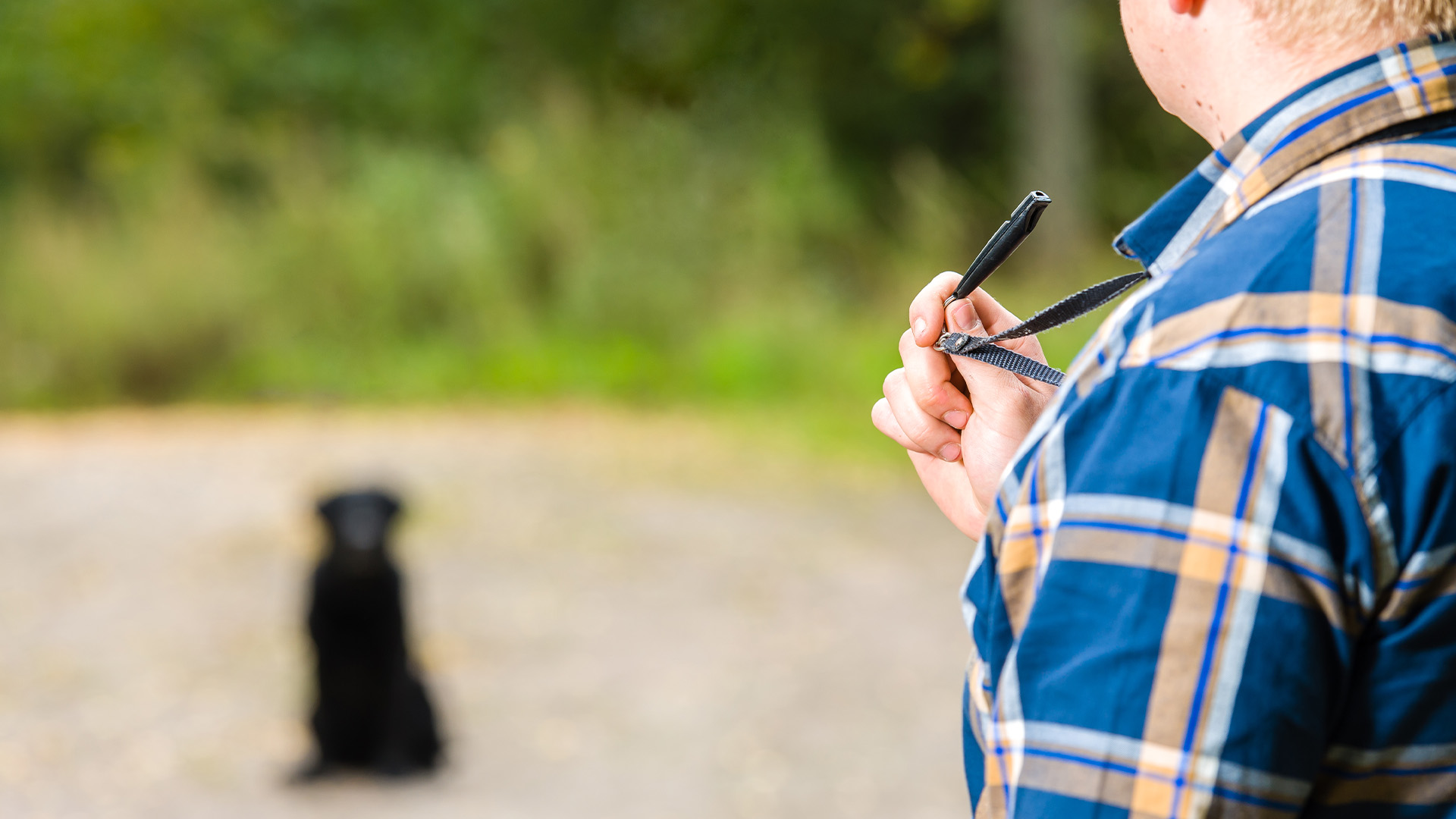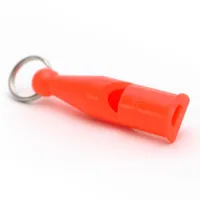What is whistle training for dogs?
Here’s everything to know about this popular training method

You might be considering whistle training for dogs if you’re hoping to work on improving your dog’s recall or establishing important commands.
Whistle training is a form of training that some dog parents swear by, but maybe you’re worried that the sound might hurt your dog’s ears, or that it won’t be effective enough – there are all sorts of questions you might be looking for answers to!
If you’d like to find out more about whistle training, the benefits of it, and the mistakes dog parents might make, you’re in the right place. We’ve got advice from the experts at ACME Kennels and from vet Dr Rebecca MacMillan to help you decide whether whistle training is right for you.
What is whistle training and when can it be used?
Essentially, whistle training involves using a whistle to communicate with your dog – either alongside or instead of verbal commands. Ben McFarlane, of ACME Kennels, describes it as “incredibly effective,” adding, “with commitment and consistency, it can be a valuable tool for clear communication and stress-free canine adventures.”
You can start whistle training with a dog of any age, but be sure not to make your sessions too long! Use high-value rewards (like the best dog treats), so your dog learns that, for example, if you use the whistle and they come back to you, they’ll get their reward and lots of praise.
You might want to start by using the whistle in the backyard, to get your dog used to it. You can use it indoors, too, to help train commands you’d like your dog to learn. And, as dog whistles are small and portable, you might like to take them on walks with you to let your dog know when you’d like them to return to your side.
ACME Pro Trialler 212 Dog Whistle | Amazon
This whistle is a great all-rounder with a sound that is well within human hearing. It holds its frequency no matter how loud you blow, so your dog will always know it’s their whistle. This whistle is especially good over distance and a good choice for harder to train dogs and heavy cover situations.
Is whistle training cruel for dogs?
“Having whistle-trained my own dog, I can categorically say that it is not cruel,” says Dr MacMillan. She explains that most dogs love the sound and while come when they hear it once they’ve been trained – they come to associate it with treats, and we know that training dogs with treats is effective!
Get the best advice, tips and top tech for your beloved Pets
However, it’s important to use the whistle appropriately. Don’t blow it loudly at close range or blow it directly into your dog’s ear. To keep your dog happy, it’s best to keep the whistle away from young children who might not know or remember how to use it correctly.
And even when incorrect whistle training isn’t necessarily cruel, it can still negatively impact your progress and affect your relationship with your pup, potentially leading to trust issues and frustration.
Benefits of whistle training
“The whistle remains a consistent sound, each and every time,” says Dr MacMillan. “Unlike our voices, it doesn’t change in the face of different emotions, such as stress, anger, or sadness.”
To that end, anyone can use a whistle and produce the same sound. If you and your partner or children split walking and training duties, or your friend helps out, you can all produce the same sound even if you have different voices. This can make things less confusing for your pup.
Meanwhile, says Dr MacMillan, “Whistles also carry much further than our own voices do. This not only saves the embarrassment of having to shout for your dog when they are at the opposite end of the field, but it can also be extremely helpful on a windy day or if there is other background noise going on.”
Whistles are great if you want to cut through other noise – you’re not just one more dog parent standing in a field shouting for your dog to come back!
What mistakes do dog parents make when whistle training?
Dog parents can make mistakes when they’re new to whistle training. While it’s best to make yourself familiar with them before you start, nobody’s perfect. If you’ve already started whistle training and realize that you’ve made some of these mistakes, as outlined by the experts at ACME Kennels, in the past, it’s never too late to alter your approach!
- Lack of positive reinforcement: Positive reinforcement is key. A whistle is a great signal, yes, but you need to keep your pup motivated to repeat the desired behavior with high-value rewards. Start off with treats and praise together, before gradually phasing out treats while keeping the praise.
- Overusing the whistle: There can be too much of a good thing! Overusing your whistle can confuse your dog – only use it when there’s truly a need for it, and only for specific commands. This will keep it more effective.
- Choosing the wrong whistle: Different whistles vary in pitch and frequency, so test a few types with your pup and keep to the one that’s most effective in training.
- Poor understanding of whistle sounds: As simple as a dog whistle might be, it’s on us to use them effectively. It’s important we know how to produce a clear set of sounds for specific commands, practicing consistently, pairing whistle sounds with actions, and reinforcing our dogs’ responses with rewards.
- Inconsistent commands: Consistency is important in helping your dog learn things more quickly. When you mix or change commands, your dog’s more likely to get confused – just as they might be confused if you use verbal and whistle commands interchangeably. Decide beforehand whether to use whistle signals by themselves or use verbal commands alongside them.
- Insufficient practice: Sometimes, dog parents simply don’t practice with the whistle frequently enough to see real progress. There’s no quick fix; it’s important to put the hard work in if you’re hoping to see results.
If you’d like more training advice, here are three reasons why your dog’s recall isn’t reliable (and what you can do about it), and 15 helpful ways to get your dog to come back to you on off leash walks.

Adam is a freelance journalist specialising in pets, music and culture, and mental health and wellbeing. He investigates and writes the large majority of news on PetsRadar, and collaborates with veterinary experts to produce informative pet care content.
Adam has a journalism degree from Southampton Solent University and a masters degree in Magazine Journalism from Cardiff University. He was previously senior editor at dog advice website DogTime.com, and has also written for The Independent, GoodToKnow and Healthline.
He owns two rescue cats, Bunny and Dougie, and has also previously had a rabbit, fish and Roborovski dwarf hamsters.

